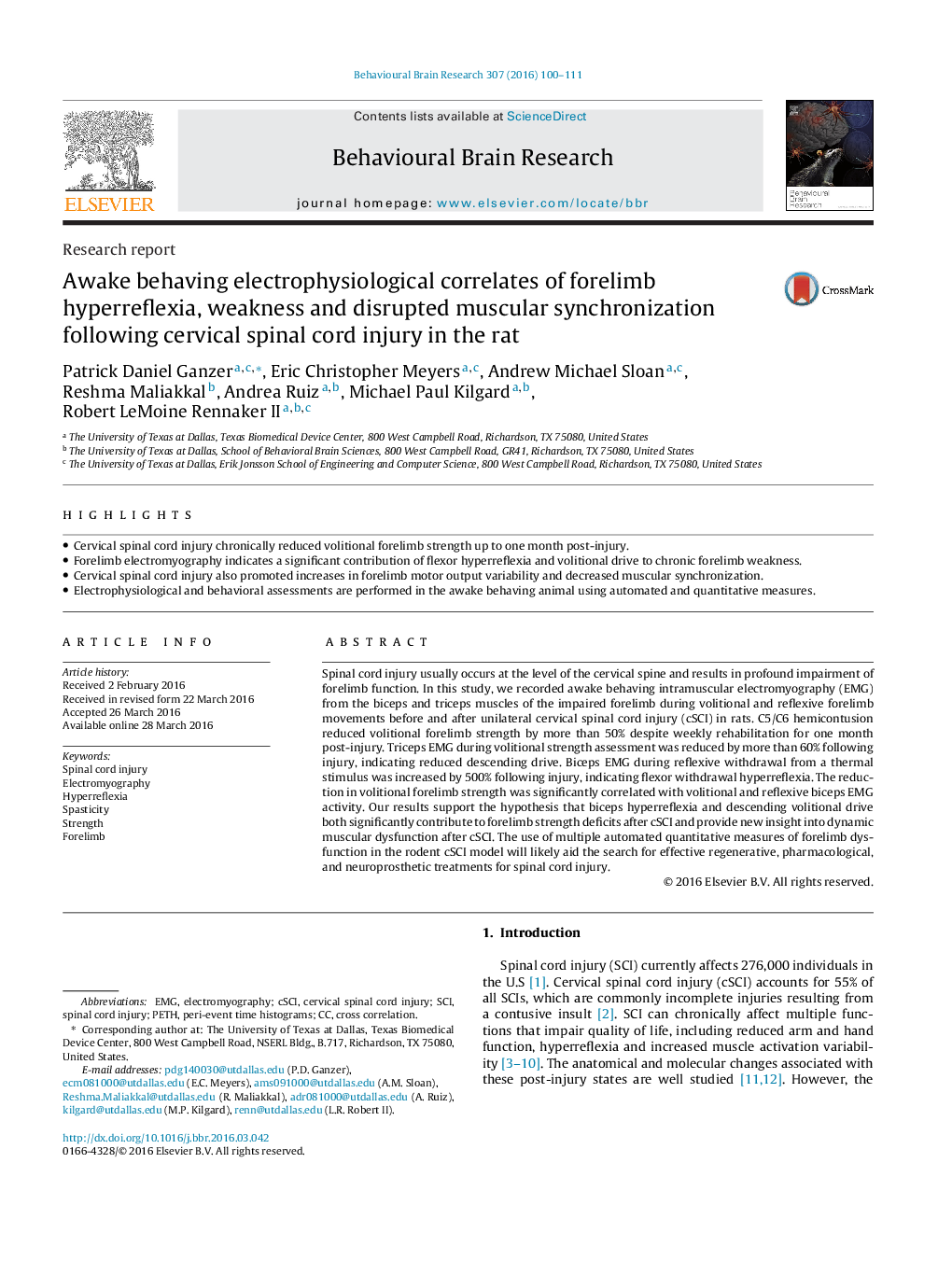| کد مقاله | کد نشریه | سال انتشار | مقاله انگلیسی | نسخه تمام متن |
|---|---|---|---|---|
| 4312259 | 1612926 | 2016 | 12 صفحه PDF | دانلود رایگان |

• Cervical spinal cord injury chronically reduced volitional forelimb strength up to one month post-injury.
• Forelimb electromyography indicates a significant contribution of flexor hyperreflexia and volitional drive to chronic forelimb weakness.
• Cervical spinal cord injury also promoted increases in forelimb motor output variability and decreased muscular synchronization.
• Electrophysiological and behavioral assessments are performed in the awake behaving animal using automated and quantitative measures.
Spinal cord injury usually occurs at the level of the cervical spine and results in profound impairment of forelimb function. In this study, we recorded awake behaving intramuscular electromyography (EMG) from the biceps and triceps muscles of the impaired forelimb during volitional and reflexive forelimb movements before and after unilateral cervical spinal cord injury (cSCI) in rats. C5/C6 hemicontusion reduced volitional forelimb strength by more than 50% despite weekly rehabilitation for one month post-injury. Triceps EMG during volitional strength assessment was reduced by more than 60% following injury, indicating reduced descending drive. Biceps EMG during reflexive withdrawal from a thermal stimulus was increased by 500% following injury, indicating flexor withdrawal hyperreflexia. The reduction in volitional forelimb strength was significantly correlated with volitional and reflexive biceps EMG activity. Our results support the hypothesis that biceps hyperreflexia and descending volitional drive both significantly contribute to forelimb strength deficits after cSCI and provide new insight into dynamic muscular dysfunction after cSCI. The use of multiple automated quantitative measures of forelimb dysfunction in the rodent cSCI model will likely aid the search for effective regenerative, pharmacological, and neuroprosthetic treatments for spinal cord injury.
Journal: Behavioural Brain Research - Volume 307, 1 July 2016, Pages 100–111